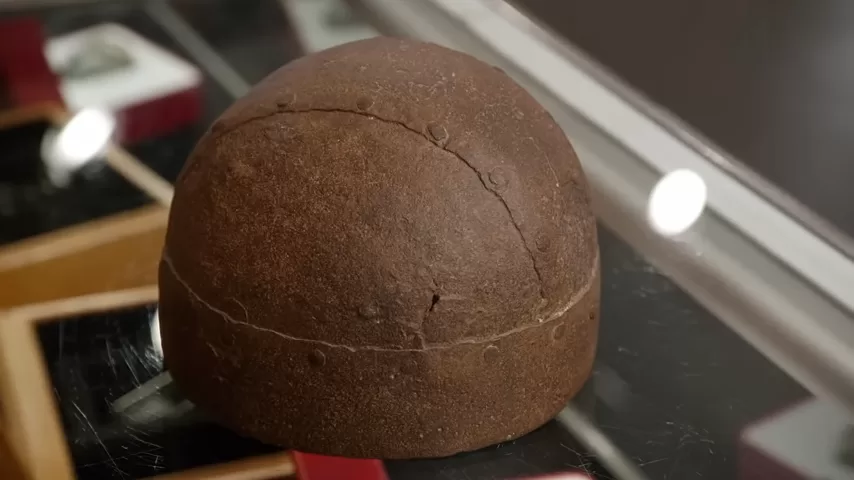You never know what you’ll find at an estate sale. Old tools, forgotten artwork, dusty furniture—and sometimes, a 1,500-year-old iron helmet worth $15,000.
That’s exactly what happened when a man and his sister stumbled across what looked like an old football helmet buried in a pile of random household items. At the time, it was more of a novelty—a cool decoration, maybe a conversation piece.
“It just looked really old and interesting,” the seller explained. “Kind of reminded me of something out of Gladiator or Magneto’s wardrobe.”
But what he had wasn’t a costume. It was a rare Anglo-Saxon iron war helmet, and it was about to change his life.
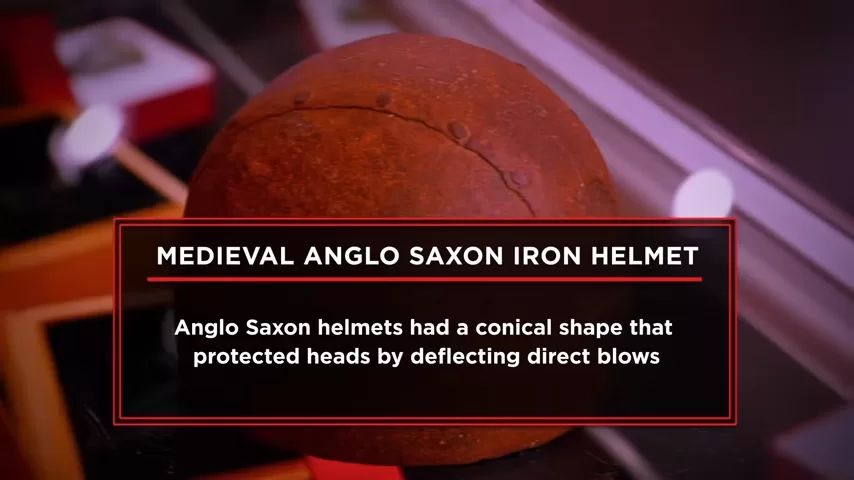
First Glance: Just an Old Metal Headpiece?
When the seller brought the helmet into the pawn shop, the first reaction was cautious curiosity. It looked aged. It felt heavy. It had that unmistakable hand-forged, uneven texture that you just can’t fake easily.
“It looks like something from the 6th or 7th century,” the shopkeeper noted. “It’s not precision-made like today’s stuff—it has that rough, medieval authenticity.”
It was possibly made of iron, weighed around 5 to 8 pounds, and had a distinctly Anglo-Saxon design—the kind worn by warriors and nobles alike. Vikings wore similar gear. Knights, too. It wasn’t flashy, but it had that unmistakable “real deal” aura.
The seller had done some basic research and came in hoping to get $750 for it.
“I don’t know if it’s worth $7.50 or $7,000,” he joked.
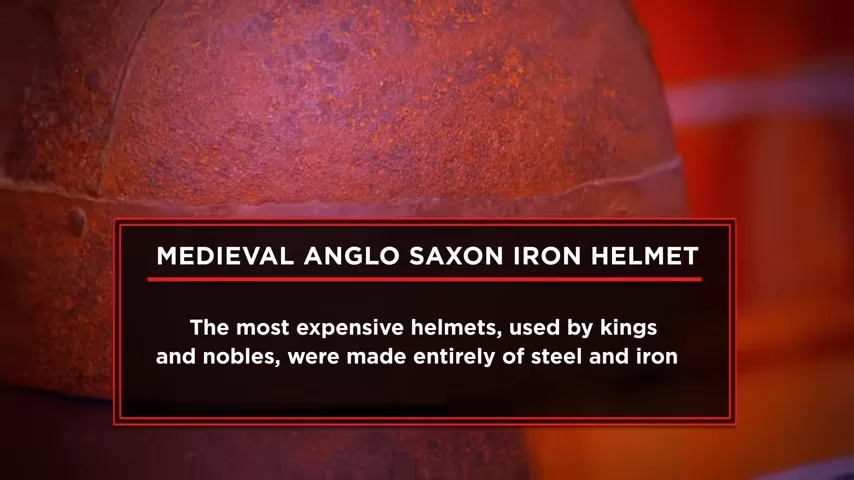
Little did he know just how off he was.
Enter the Expert: Rare, Real, and Remarkable
To find out if the helmet was genuine, the shop brought in Bob, a well-respected expert in arms and antiquities.
The moment Bob laid eyes on it, he was stunned.
“To find one of these in this condition? You just don’t. Iron doesn’t last 1,500 years unless it’s been in a bog, river, or oxygen-deprived environment.”
Most helmets from that era disintegrate into powder. Even museums rarely get complete specimens. And this one? Still intact.
But just to be sure, Bob used a handheld XRF analyzer—a device that shoots X-rays into the object and reads its elemental composition. The goal? To confirm whether the helmet was made of carbon steel, the alloy used during the early medieval period.
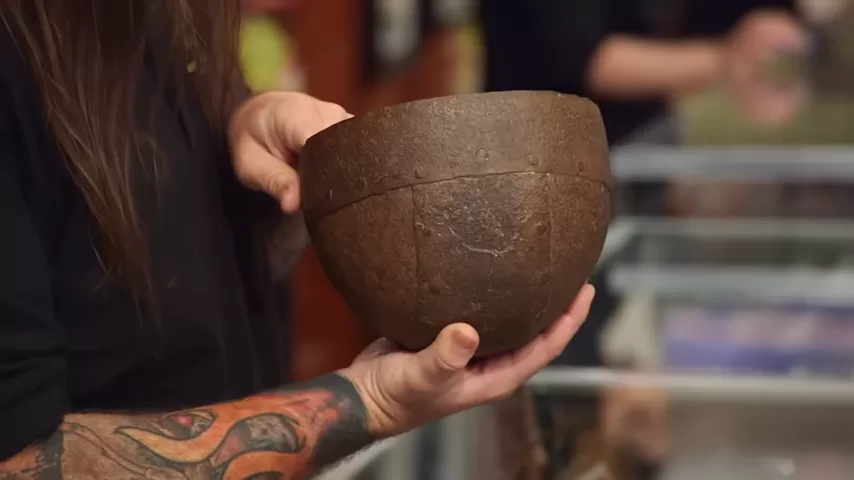
“We’re seeing 99.76% iron, with traces of copper, zinc, and chromium,” Bob confirmed. “This is carbon steel. It’s what it should be.”
Appraisal: What’s It Really Worth?
Once authenticity was confirmed, the conversation shifted to value. Bob didn’t hold back.
“This is a one-in-a-million find,” he said. “It’s a $15,000 helmet. That’s how rare it is.”
The seller was in shock. He had hoped for 750 bucks and now had five-digit figures floating in his head.
“I’ve got goosebumps now too,” he laughed. “I had no idea.”

The Negotiation: Hammer, Meet Anvil
Of course, knowing what it’s worth and getting that much are two different things. The shopkeeper knew the market was niche—it might take a long time to resell something like this.
“It could sit in my shop for two years,” he explained. “It’s not something you flip overnight.”
The seller initially asked for the full $15,000. The shop countered with $9,500. After a little friendly haggling and a reminder that $10,000 was still 13 times the seller’s original ask, they struck a deal.
“Ten big ones,” the shopkeeper offered. “I’m not going to let it walk over $500.”
Deal done. $10,000.
“I can’t believe I’m leaving with ten grand,” the seller said. “Just blows my mind.”
Why It’s So Rare
So what makes this helmet so special?
- Age: Dated to the 6th–8th century, during the Anglo-Saxon era of British history.
- Condition: Iron helmets from this time usually corrode completely. This one survived intact, likely protected in low-oxygen conditions.
- Craftsmanship: Forged with hand tools, it showcases a design that reflects the practical needs of warriors before the age of plate armor.
- Authenticity: Verified by material analysis. The XRF scan confirmed the presence of pre-modern steel composition, aligning perfectly with historical metallurgy.
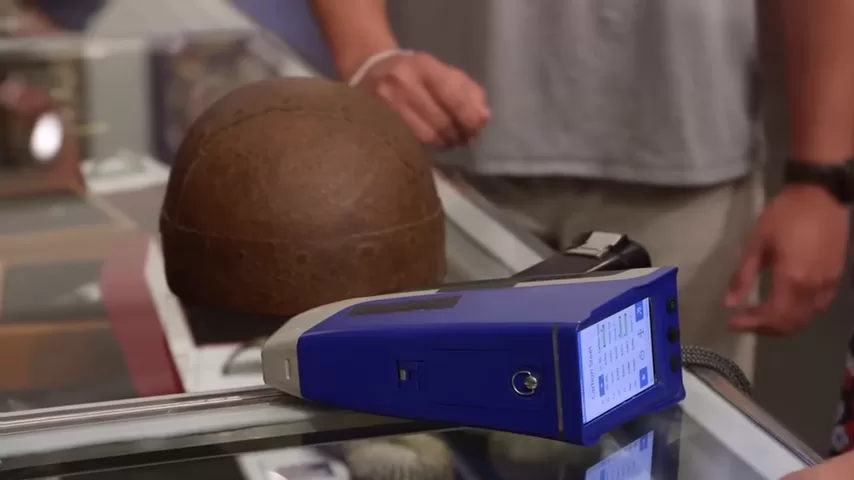
In short, it’s a piece of medieval battlefield history that somehow slipped into a dusty estate sale table—and into the hands of someone who didn’t know what he was holding.
Who Would Buy This?
According to the expert, a piece like this would appeal to:
- Museums focused on early medieval history or Anglo-Saxon culture
- Private collectors of rare arms and armor
- Universities or institutions seeking teaching specimens
- Wealthy history enthusiasts who want a real conversation piece in their study
It’s not an item for the average collector—but to the right buyer, it’s priceless.
Final Thoughts: From Estate Sale to Epic Find
This story isn’t just about money. It’s about recognizing value in forgotten places. It’s about how history often hides in plain sight—on shelves, in garages, or buried under junk at estate sales.
To the seller, it was a neat-looking iron helmet. To the expert, it was a once-in-a-lifetime discovery.
To the rest of us, it’s a reminder that sometimes, the most extraordinary treasures are hiding in the most ordinary places.
